In my last article about building a custom AR-15, I mentioned compensators as one of your muzzle devices. However, this isn’t the only option available. Today I will cover two similar-looking but very different parts—often confused—muzzle brakes and compensators. There are several devices available, depending on what you want the device to do. While this blog will be looking at muzzle brakes and compensators, specifically, there are also flash suppressors/flash hiders. I’ll even touch on the hybrid versions of these muzzle devices.
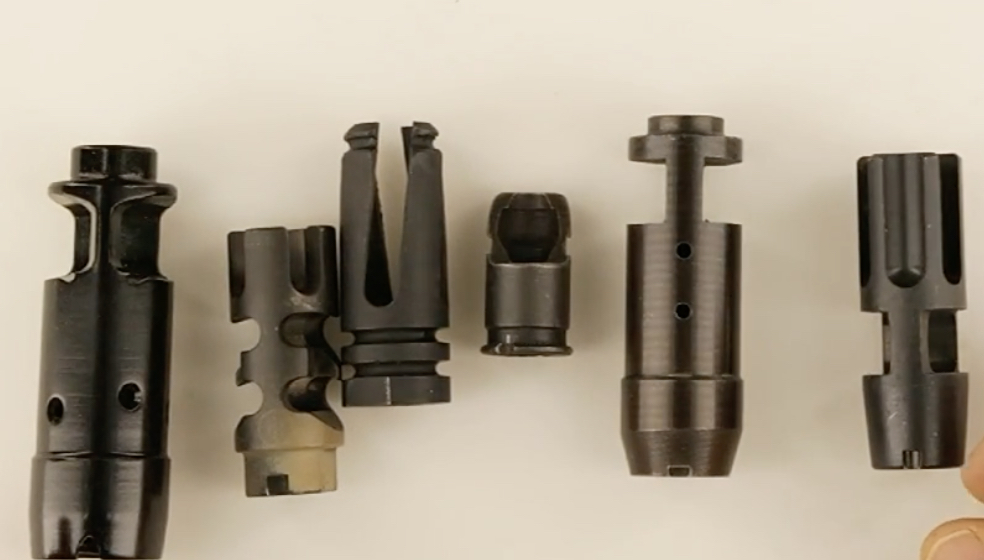
Muzzle Devices
First off, what’s a muzzle device? A muzzle device can be any number of devices that attach to the muzzle of your firearm—surprising, I know.
Unfortunately, these devices are often confused, and you’ll find, even those behind the gun counter mess it up. Each of these muzzle devices is responsible for different things. They also look slightly different from one another. But if you don’t know what you’re looking at, it’s easy to think they’re all the same thing. Now throw in the fact that there are hybrid versions of these muzzle devices—you’ll find more inaccurate information, which is why I’ve decided to cove a few of these today.
Keep an eye out for a future blog post all about flash suppressors!
Here’s where you typically find inaccurate information.
- Compensators are often referred to as muzzle brakes—they aren’t the same thing, and they have two different jobs.
- Recoil can be decreased using a compensator — this is only true if you have a hybrid. But, on its own, a compensator isn’t meant to mitigate recoil.
- Flash suppressors and muzzle brakes are often mislabeled — muzzle brakes do not suppress the flash produced from the gasses exiting your rifle’s muzzle.
What’s a Compensator?
So, what is a compensator? A compensator, simply put, is a device that goes on the end of your muzzle to help prevent muzzle rise. Sometimes, you will hear people call it muzzle climb—we have a great way of giving everything a few, if not several different names in the gun community. Muzzle climb, muzzle rise, no matter how you call it, is the same thing.
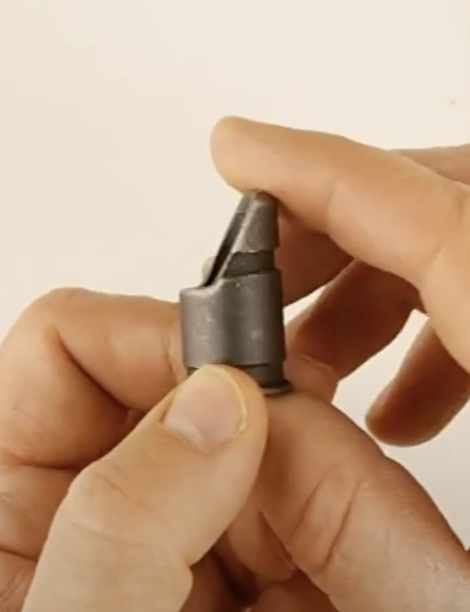

What’s not the same thing is muzzle climb and recoil. Again, there are devices helpful for both of these, but that’s a compensator/brake hybrid, not a true compensator.
How do Compensators Work?
As I addressed above, a compensator works to help mitigate muzzle climb—this happens because gas is directed upward, pushing against the closed portion of the compensator. One thing you’ll notice on a compensator is the opening on top of the device (pictured above). Unlike a flash suppressor, though, there aren’t openings evenly placed all the way around the device. Instead, there is a closed portion on the bottom. This is also why a compensator can’t be a flash suppressor because the gas can’t be evenly distributed.
Compensator Hybrids
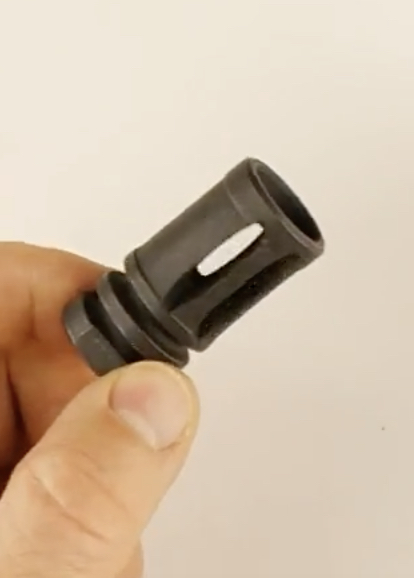
A common hybrid you might see on the end of a rifle is a compensator/flash suppressor combination. These typically have something that looks like a suppressor on top (evenly spaced open slots) but a completely closed bottom (a place for the gas to push against to keep the muzzle from rising).
What’s a Muzzle Brake?
Now, let’s get into muzzle brakes because, again, this isn’t the same thing as a compensator. A muzzle brake mitigates recoil.
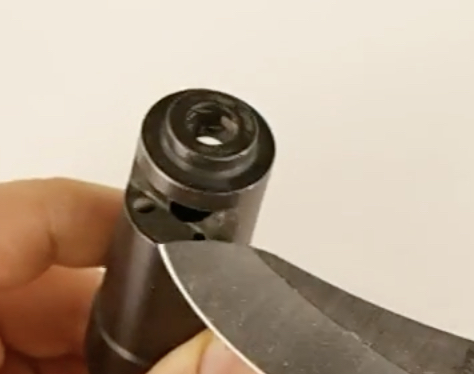
When you fire your rifle, gas is created. This gas causes recoil. Recoil isn’t exactly a shooter’s best friend when it comes to accuracy. But it’s important in a gas-operated rifle if you want to extract spent rounds and chamber new ones automatically.
This tends to happen when you fire a rifle: Right-handed shooters pull the trigger; the rifle goes back into the shoulder (recoil), and the rifle’s muzzle goes up and to the right. Left-handed shooters pull the trigger; the rifle recoils to the rear, and the muzzle will go up and to the left. This is recoil and muzzle rise in the same motion. The muzzle brake only helps with the recoil, not the muzzle rise.
How do Muzzle Brakes Work?
A muzzle brake has these small gas ports inside the brake, facing a flat surface and openings on the side. The gasses, instead of going upward, like a compensator (or being evenly distributed all the way around, like a flash suppressor), exit through the gas ports and hit against these flat surfaces, which helps mitigate all that recoil you would feel otherwise—keeping the muzzle from moving to the rear.
Muzzle Brake Hybrids
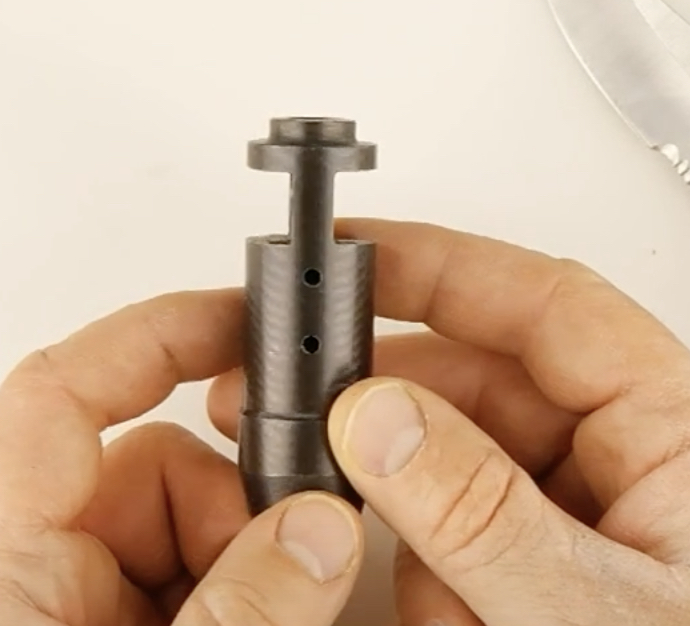
A common muzzle brake hybrid you might see is a combination of a brake and a compensator. You’ll have the flat surfaces for the gas to hit, but you will also have holes at the top with a closed bottom so that gas can exit out of the top as well. The point of this device is to help mitigate both muzzle rise and recoil.
Suppressors

I’ll quickly cover this, but not in detail because this is a blog dedicated to brakes and compensators. The devices mentioned above do not suppress flash; that’s a flash suppressor. Flash suppressors have evenly cut slits or open slots all the way around. They work because the gas is broken up, so it doesn’t ignite (causing the flash). A flash suppressor suppresses flash; they do not mitigate recoil or muzzle rise.
Hybrid Muzzle Devices | Suppressors, Muzzle Brakes, and Compensators
Again, you can find hybrid options that help mitigate flash, rise, and recoil. But, like anything, the more something does, the less likely it is to do any of those things really well. That’s why it’s a good idea to pick a deceive that only does one of these tasks. The more responsibility you give a device, the worse your outcome with each tends to be.

Some hybrids of these devices do all three, and some do only two. But again, the less you ask it to do, the better it will work. It’s like any task you might do. If you’re given one task, say cleaning the bathroom in an hour. You’re probably going to do a decent job if that’s the only thing you have to do. However, if I tell you I need you to clean the bathroom, vacuum, do the dishes, dust, mop, sweep, do laundry, organize the closet, take out the trash, wash the windows, etc., you’ll probably do about half as good a job. You don’t really have the capability of getting detailed.
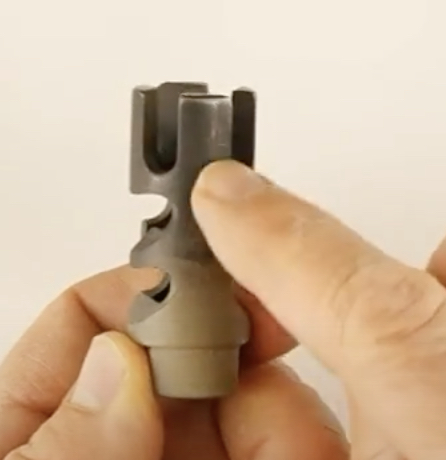
Well, neither does your hybrid flash suppressing, muzzle brake, compensator.
Did we miss anything? Do you have further recommendations? Please, comment below. We love hearing from our readers!
Looking for more content? Check out some of our other stuff!







Leave a Reply
Your email address will not be published. Required fields are marked *